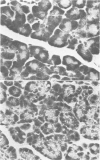Abstract
Severe pancreatitis and a pseudocyst occurred in a patient following accidental ingestion of an anticholinesterase insecticide, a substance not previously known to produce pancreatitis. Experiments were done to elucidate the mechanism. In one group of dogs the pancreatic duct was perfused and intraductal pressures were measured. The cholinesterase inhibitor 0,0-diethyl-0-(2-isopropyl-6-methyl-4-pyrimidinyl)phosphorothioate (25 mg/kg) caused a significant increase in the mean intraductal pressure from 12 +/- 2.4 to 27.8 +/- 5.9 cm saline. In a second group of dogs pancreatic secretory rates were measured. Anticholinesterase (75 mg/kg) in combination with secretin infusion (1 U/kg/hr) caused a significant increase in the secretin stimulated flow rate from 0.13 to 0.56 cc/min. Atropine (75 microgram/kg) abolished the anticholinesterase induced pressure and secretory rate increases. In a third group of dogs administration of cholinesterase inhibitor 75 mg/kg and secretin infusion 2 U/kg/hr resulted in acute pancreatic interstitial edema, acinar cell vacuolization, hyperamylasemia and hyperlipasemia. These results suggest that occurrence of pancreatitis as a complication of anticholinesterase insecticide intoxication is the result of hypersecretion and pharmacologic ductal obstruction.
Full text
PDF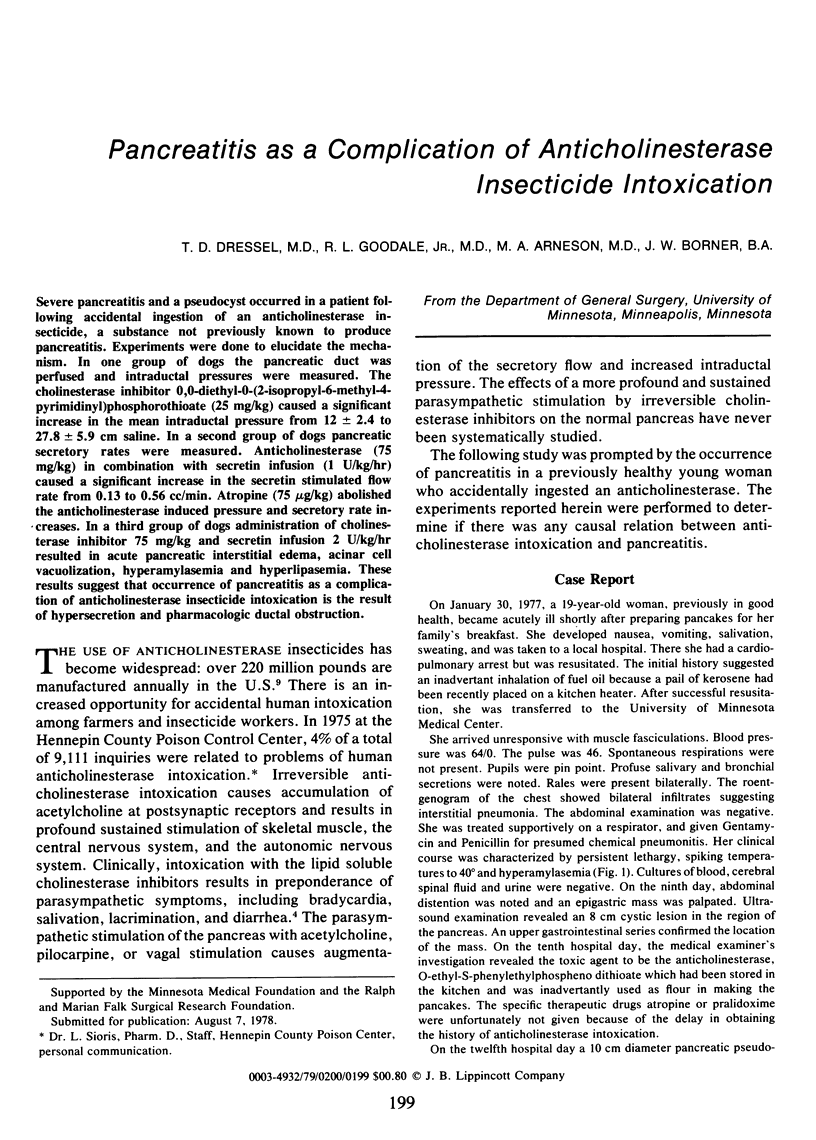
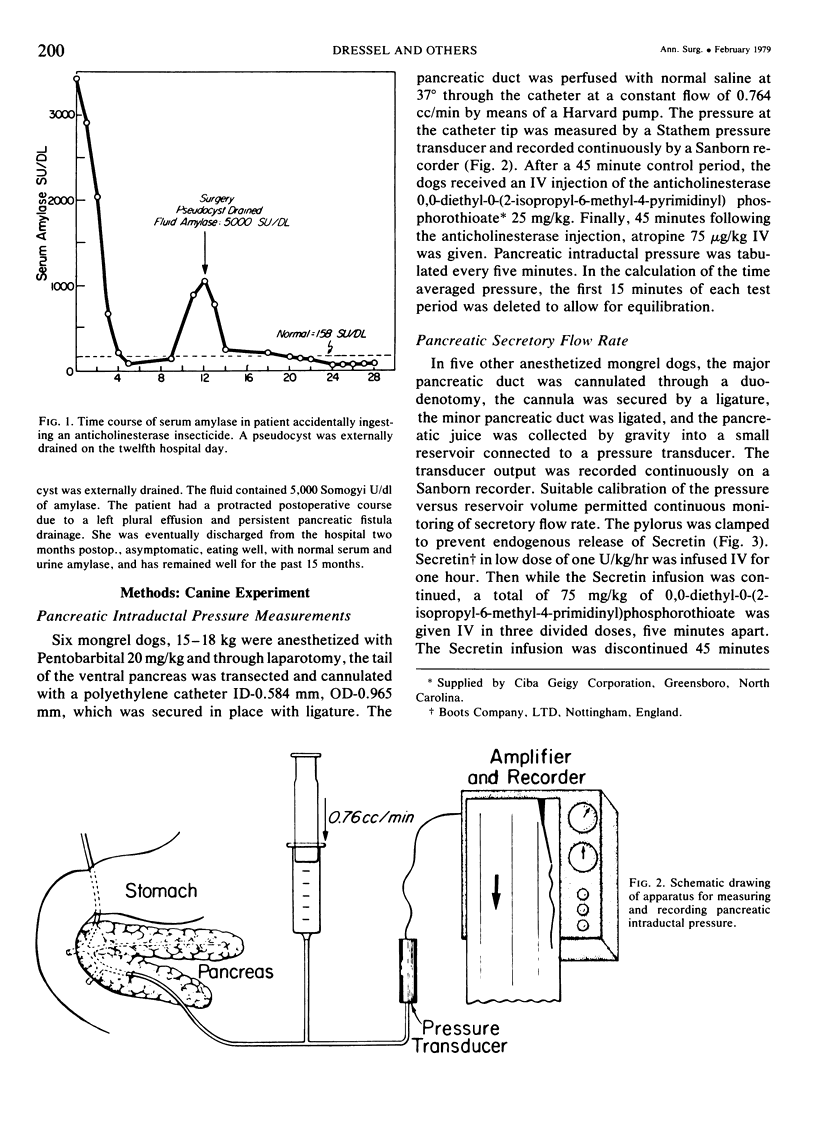
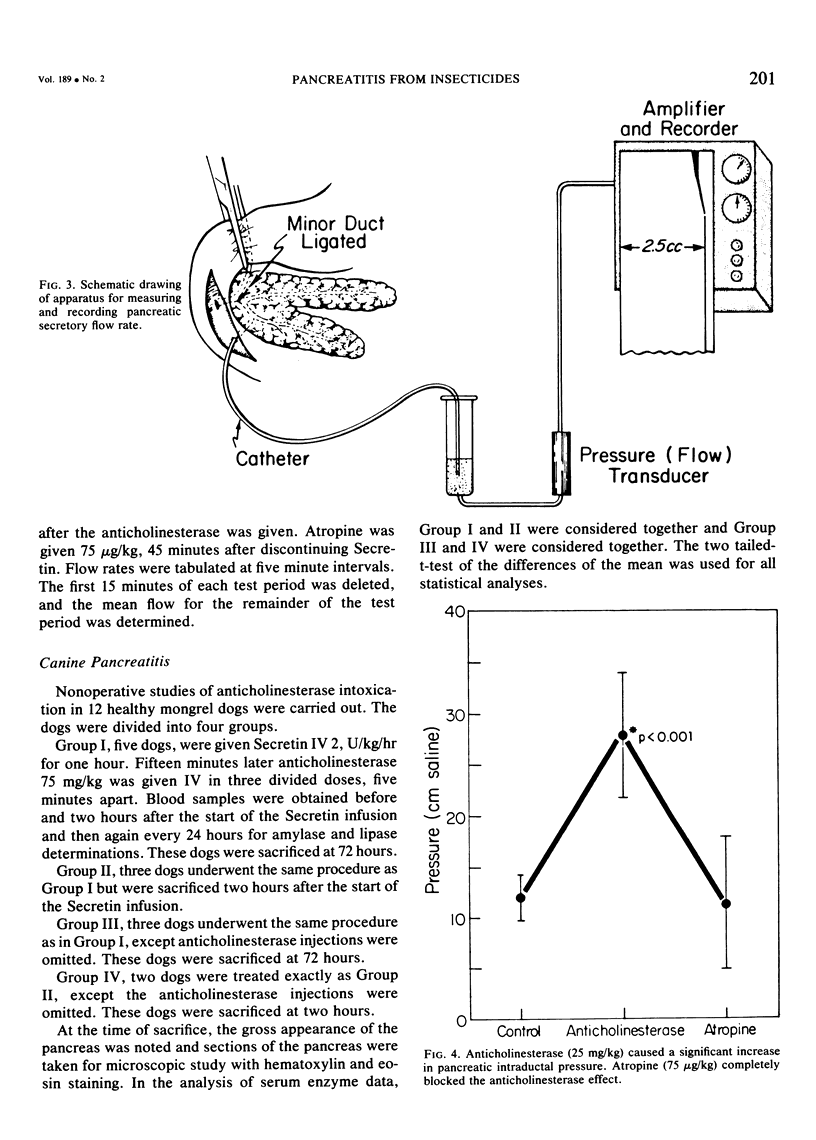
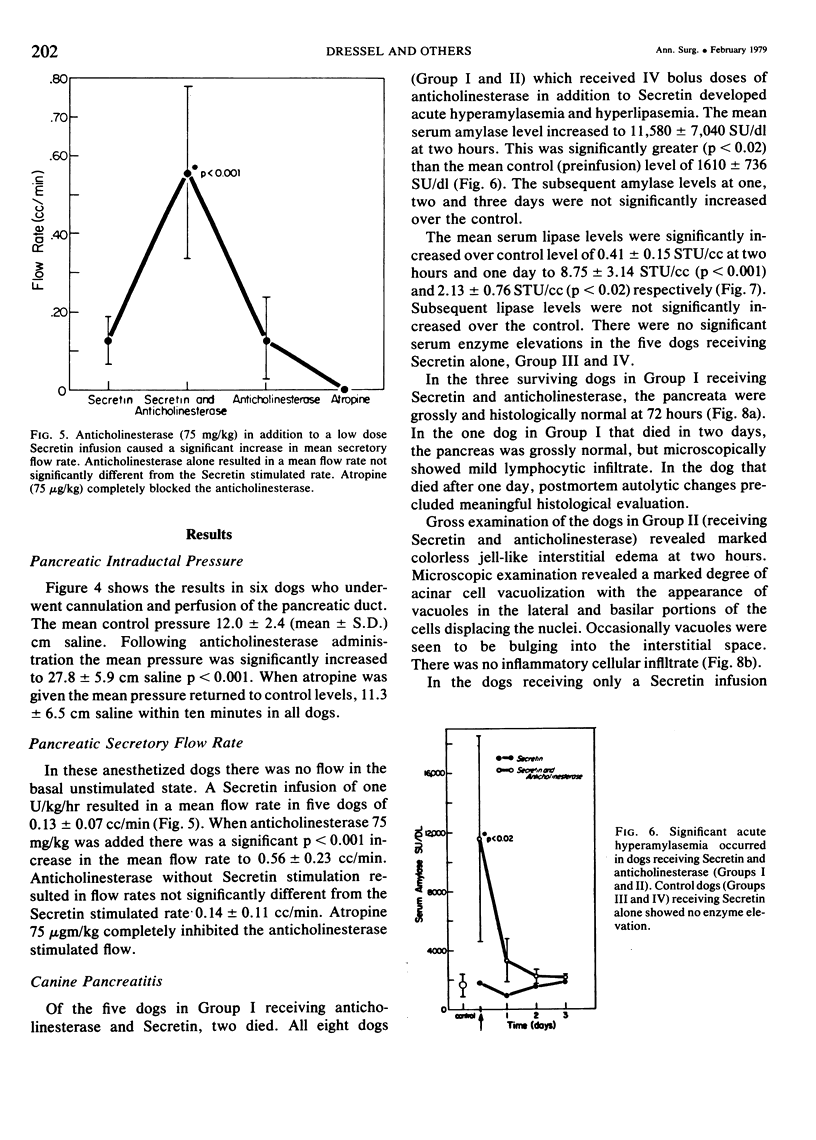
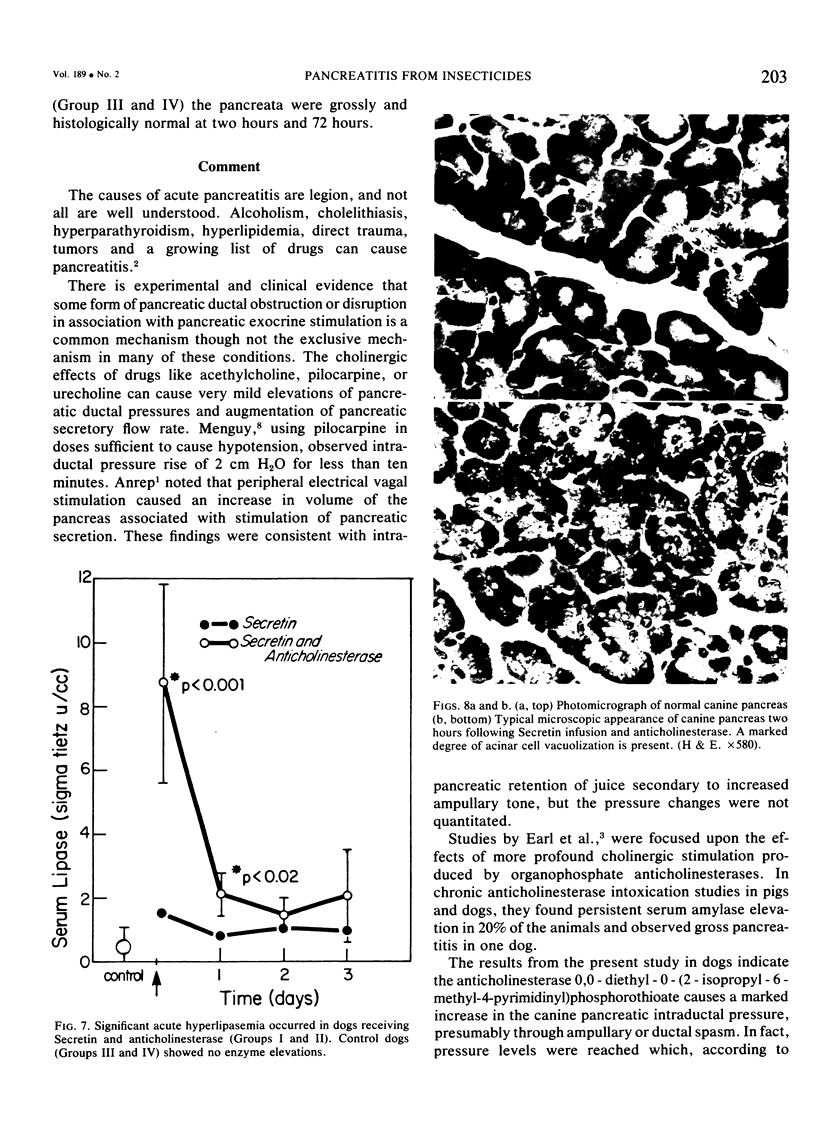
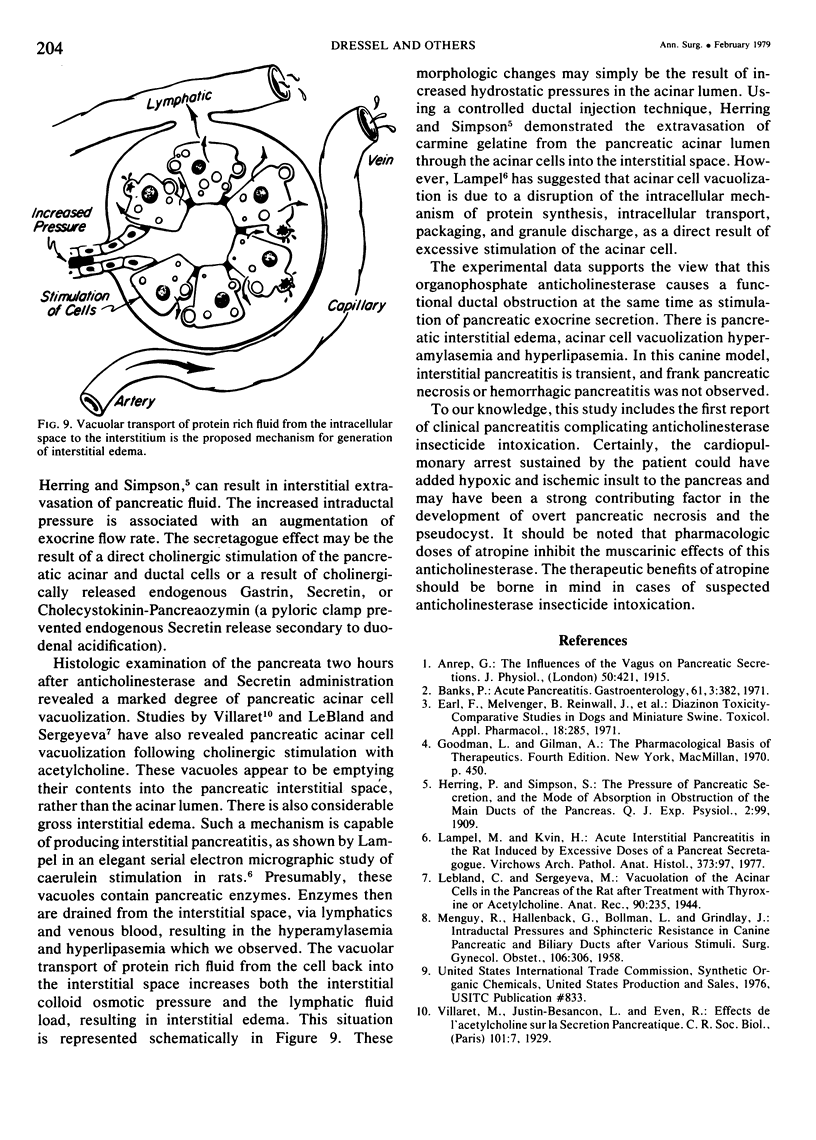
Images in this article
Selected References
These references are in PubMed. This may not be the complete list of references from this article.
- Anrep G. V. The influence of the vagus on pancreatic secretion: Second communication. J Physiol. 1916 Dec 15;50(7):421–433. doi: 10.1113/jphysiol.1916.sp001768. [DOI] [PMC free article] [PubMed] [Google Scholar]
- Banks P. A. Acute pancreatitis. Gastroenterology. 1971 Sep;61(3):382–397. [PubMed] [Google Scholar]
- Earl F. L., Melveger B. E., Reinwall J. E., Bierbower G. W., Curtis J. M. Diazinon toxicity--comparative studies in dogs and miniature swine. Toxicol Appl Pharmacol. 1971 Feb;18(2):285–295. doi: 10.1016/0041-008x(71)90120-7. [DOI] [PubMed] [Google Scholar]
- Lampel M., Kern H. F. Acute interstitial pancreatitis in the rat induced by excessive doses of a pancreatic secretagogue. Virchows Arch A Pathol Anat Histol. 1977 Mar 11;373(2):97–117. doi: 10.1007/BF00432156. [DOI] [PubMed] [Google Scholar]
- MENGUY R. B., HALLENBECK G. A., BOLLMAN J. L., GRINDLAY J. H. Intraductal pressures and sphincteric resistance in canine pancreatic and biliary ducts after various stimuli. Surg Gynecol Obstet. 1958 Mar;106(3):306–320. [PubMed] [Google Scholar]



